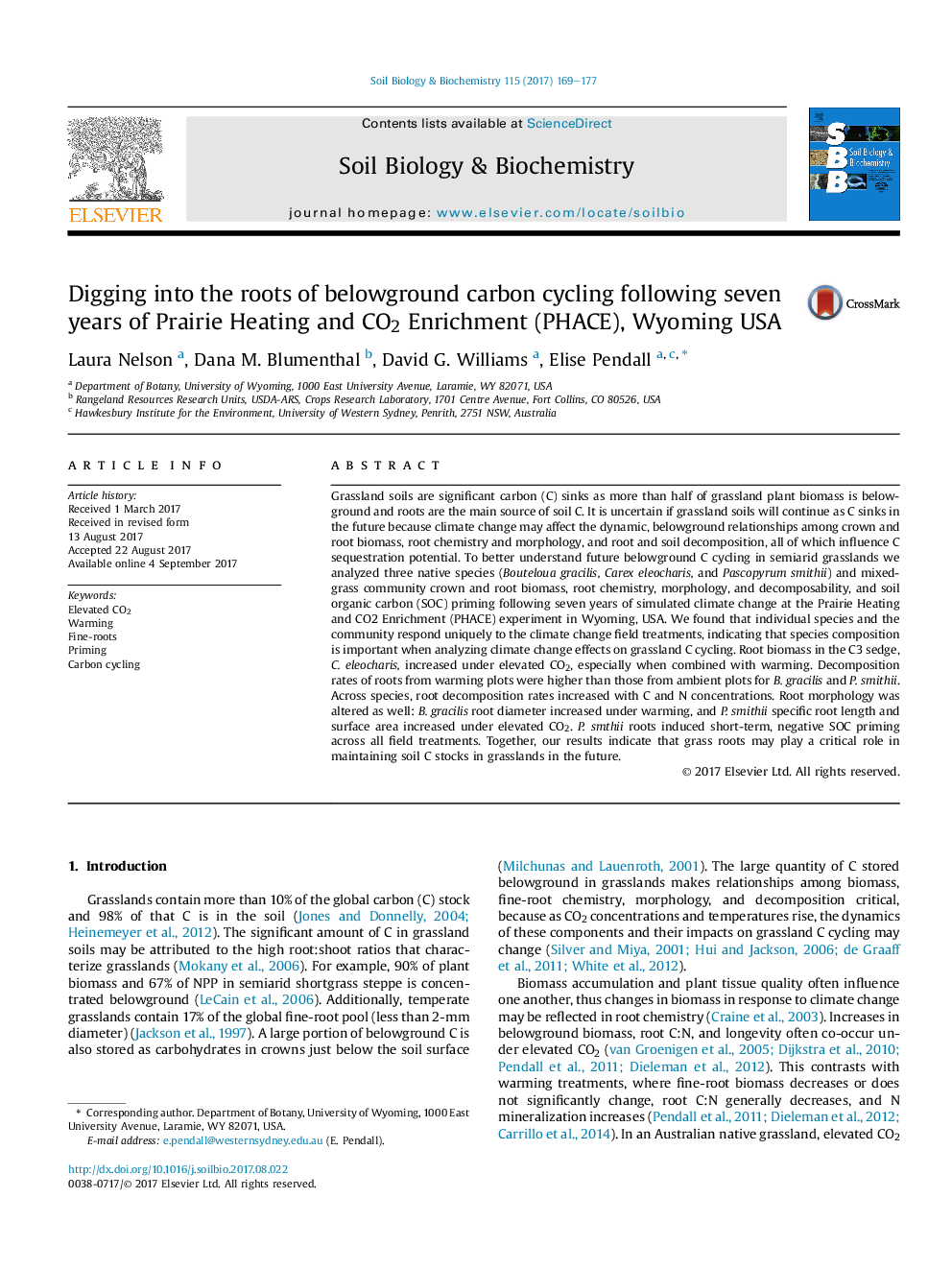| کد مقاله | کد نشریه | سال انتشار | مقاله انگلیسی | نسخه تمام متن |
|---|---|---|---|---|
| 5516238 | 1542569 | 2017 | 9 صفحه PDF | دانلود رایگان |

- Climate change effects on root traits and decomposition differed by species.
- Shifts in species composition may affect belowground carbon dynamics.
- Roots induced short-term, negative soil organic carbon priming.
- Roots may be key in continuing soil organic carbon sequestration with climate change.
Grassland soils are significant carbon (C) sinks as more than half of grassland plant biomass is belowground and roots are the main source of soil C. It is uncertain if grassland soils will continue as C sinks in the future because climate change may affect the dynamic, belowground relationships among crown and root biomass, root chemistry and morphology, and root and soil decomposition, all of which influence C sequestration potential. To better understand future belowground C cycling in semiarid grasslands we analyzed three native species (Bouteloua gracilis, Carex eleocharis, and Pascopyrum smithii) and mixed-grass community crown and root biomass, root chemistry, morphology, and decomposability, and soil organic carbon (SOC) priming following seven years of simulated climate change at the Prairie Heating and CO2 Enrichment (PHACE) experiment in Wyoming, USA. We found that individual species and the community respond uniquely to the climate change field treatments, indicating that species composition is important when analyzing climate change effects on grassland C cycling. Root biomass in the C3 sedge, C. eleocharis, increased under elevated CO2, especially when combined with warming. Decomposition rates of roots from warming plots were higher than those from ambient plots for B. gracilis and P. smithii. Across species, root decomposition rates increased with C and N concentrations. Root morphology was altered as well: B. gracilis root diameter increased under warming, and P. smithii specific root length and surface area increased under elevated CO2. P. smthii roots induced short-term, negative SOC priming across all field treatments. Together, our results indicate that grass roots may play a critical role in maintaining soil C stocks in grasslands in the future.
Journal: Soil Biology and Biochemistry - Volume 115, December 2017, Pages 169-177